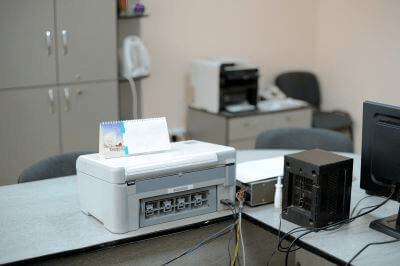What Is a Printer Cable?
 Printer cables facilitate the connection between a printer and a PC. Besides USB cables, LAN cables are also used for connecting printers to hubs for network printing.
Printer cables facilitate the connection between a printer and a PC. Besides USB cables, LAN cables are also used for connecting printers to hubs for network printing.
Apart from LAN cable connections, printer cables typically establish a one-to-one connection between a PC and a printer.
Usage of Printer Cables
When selecting a cable, it’s important to check the interface compatibility between the PC and the printer. Printer cables, typically used in wired connections, can also connect multiple PCs and printers to a hub via LAN for network printing.
Wireless LAN or Bluetooth connections do not require a printer cable.
Principle of Printer Cables
For most home-use printers, the prevalent interface is USB Type-B for the printer and USB Type-A for the PC, requiring a USB A to USB B connector. Professional or older standard printers may need a parallel port (IEEE1284) or RS232C connection. In such cases, cables like USB A to IEEE1284 or USB A to RS232C are necessary, especially for newer or notebook PCs with limited interfaces.
For network printers shared by multiple PCs, LAN cables connected through a hub are used, and the printer must support LAN connections.
Current Printer Cable Types
Printer cables vary depending on the connection method:
- Parallel Port Cable: Historically used in early home PCs, these cables are connected to the PC’s parallel port. Now largely replaced by USB, Wi-Fi, and Bluetooth, they are still found in industrial printers for compatibility.
- USB Cables for Printers: The most common type for wired connections, typically using USB 2.0, though USB 3.0 cables are also available.
- Serial Port Cable: Previously used for PCs and older Apple products, these cables have been largely replaced by modern connection methods.
Additionally, printer cables with USB on one side and Lightning or USB Type-C terminals on the other are increasingly used for smartphone connections.
Future Printer Cables
Printer cables as dedicated connection lines are becoming less common. The shift towards universal USB cables, LAN cables connected to routers, and wireless connections like Wi-Fi and Bluetooth are becoming the norm, signaling a future where wired printer cables in average households may become obsolete.